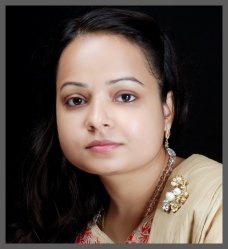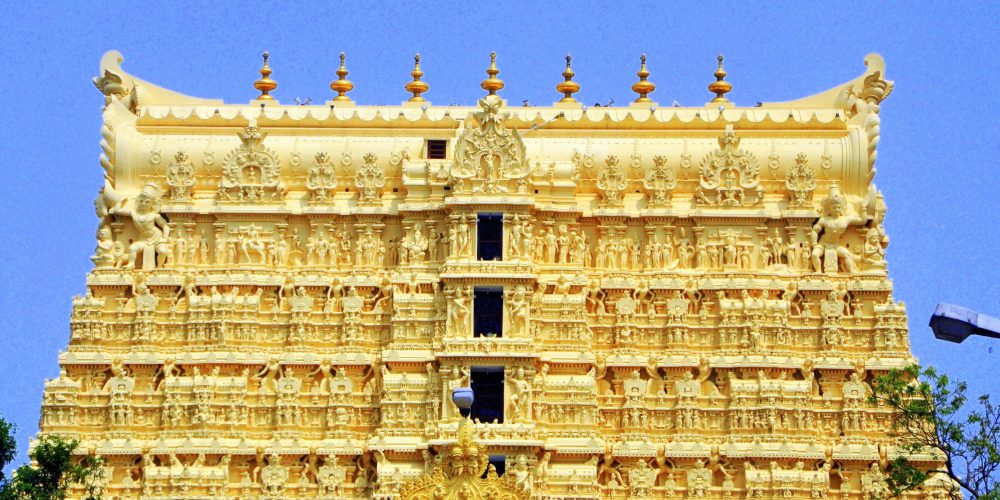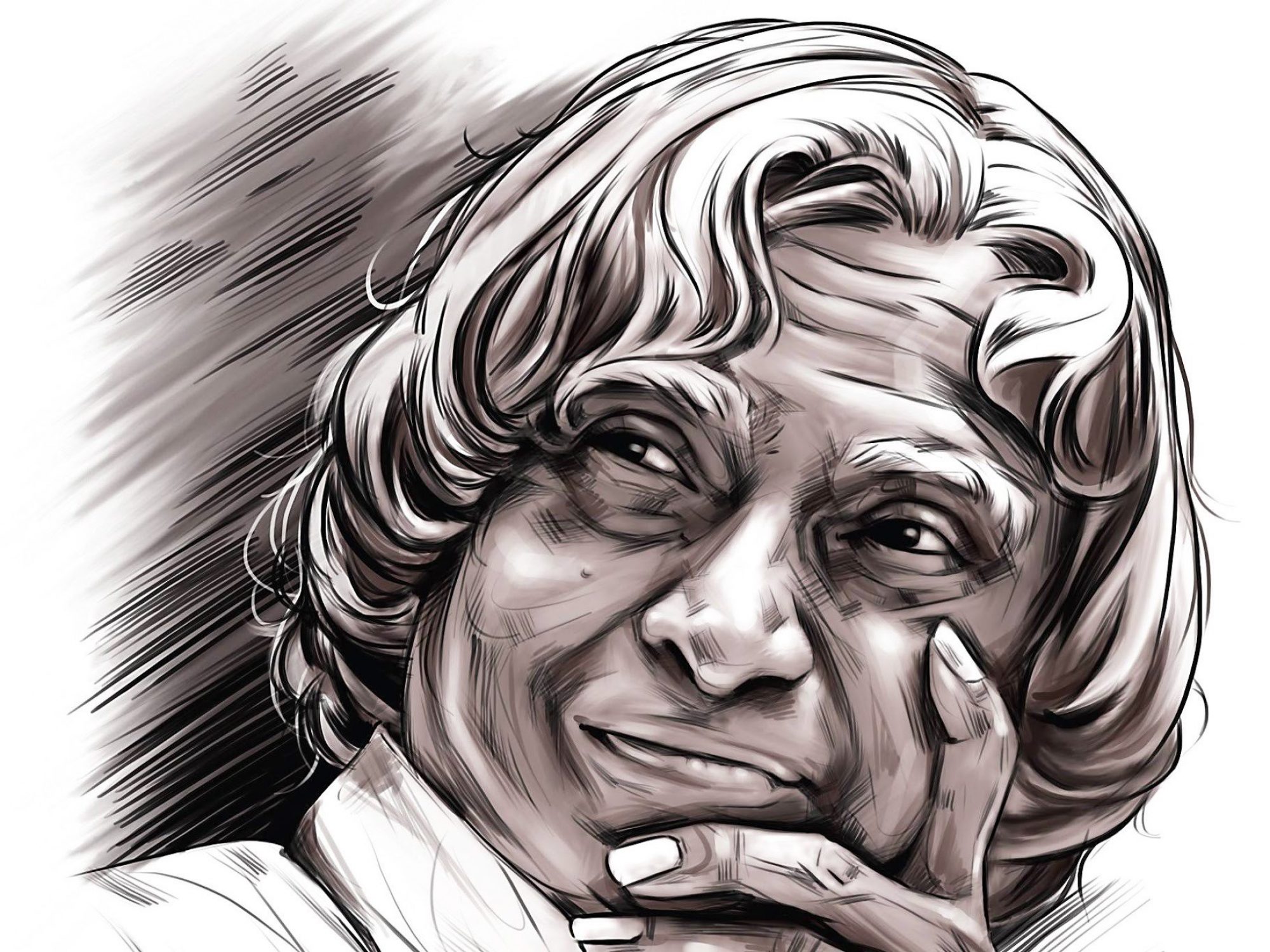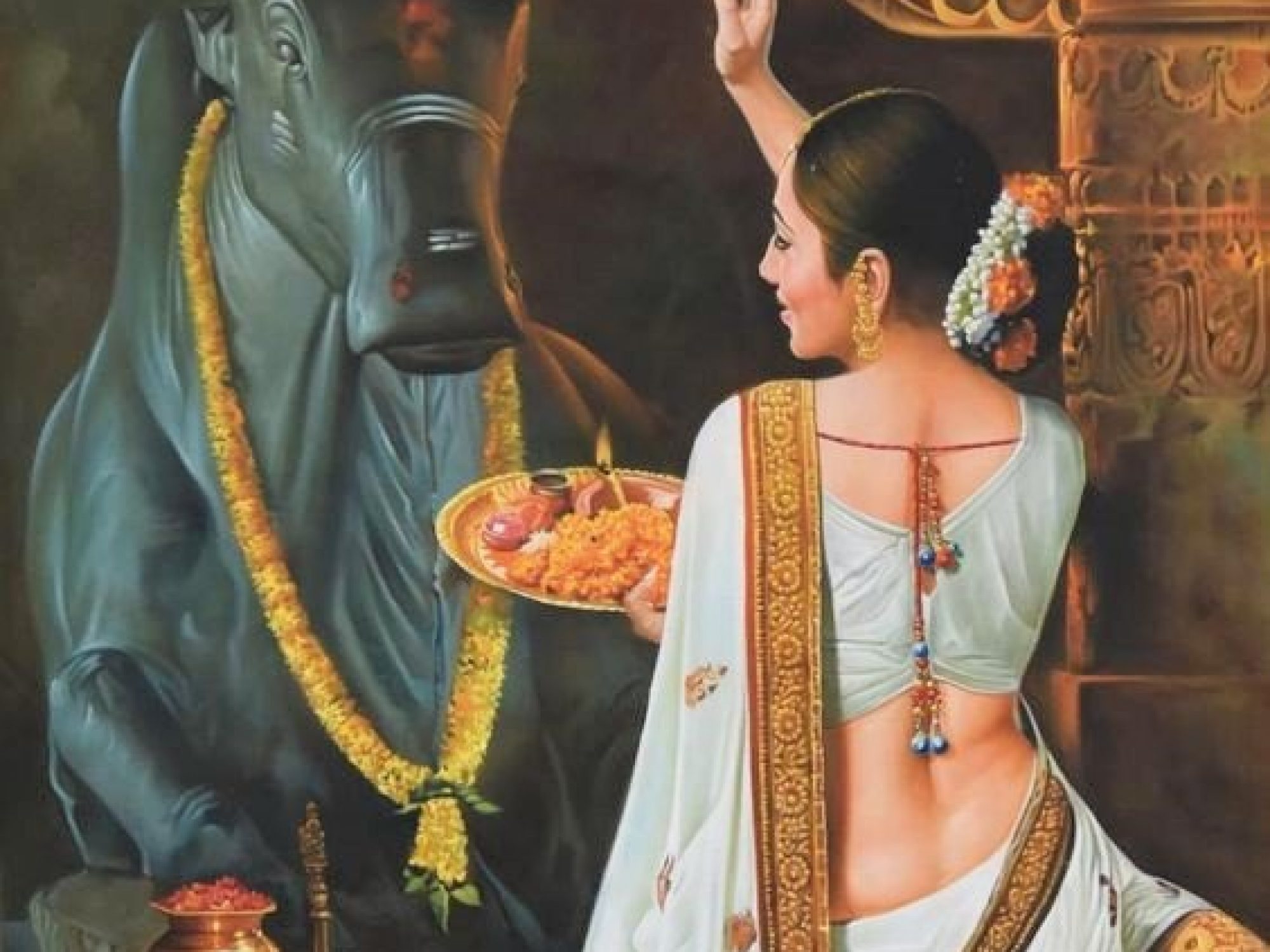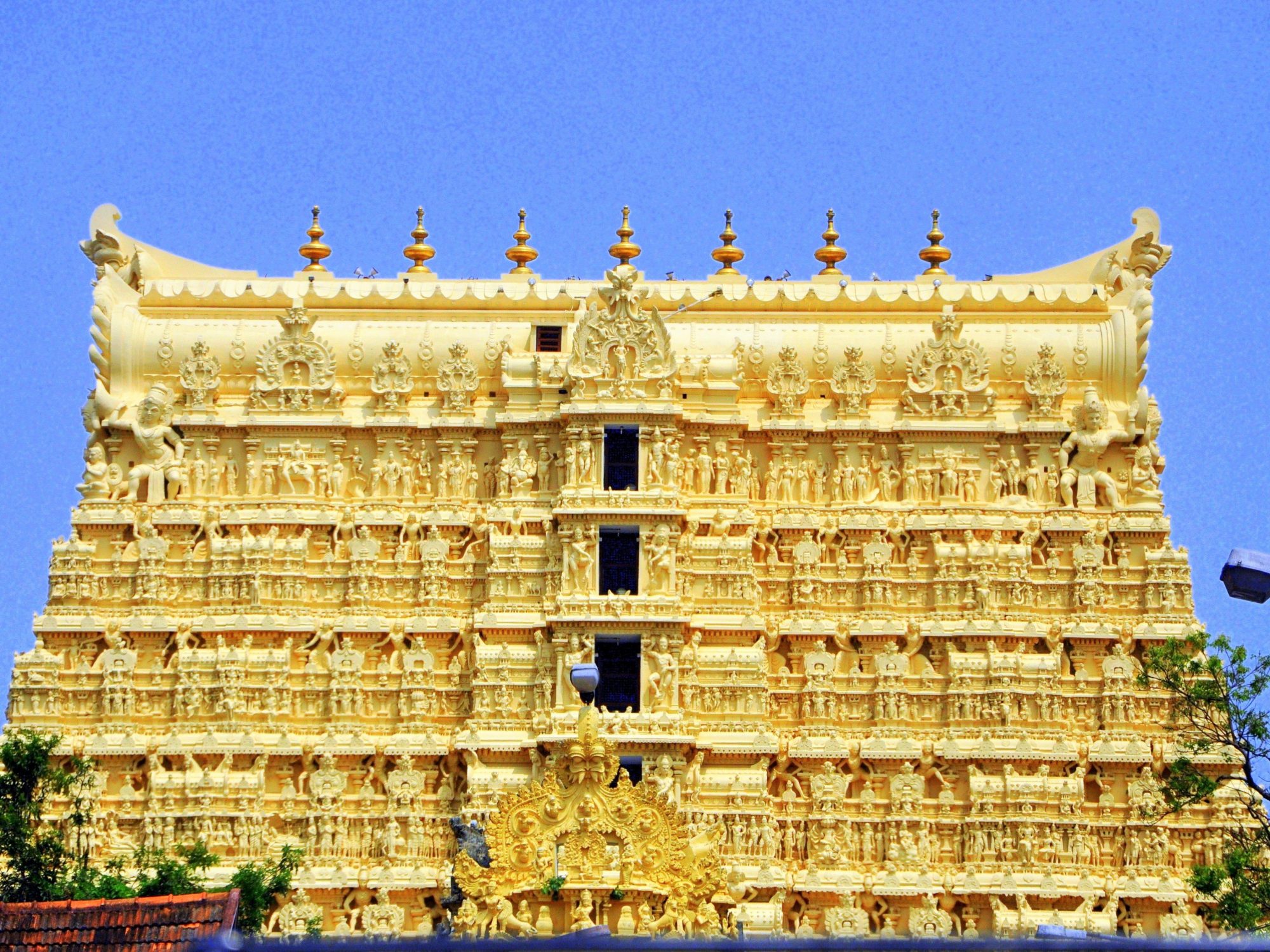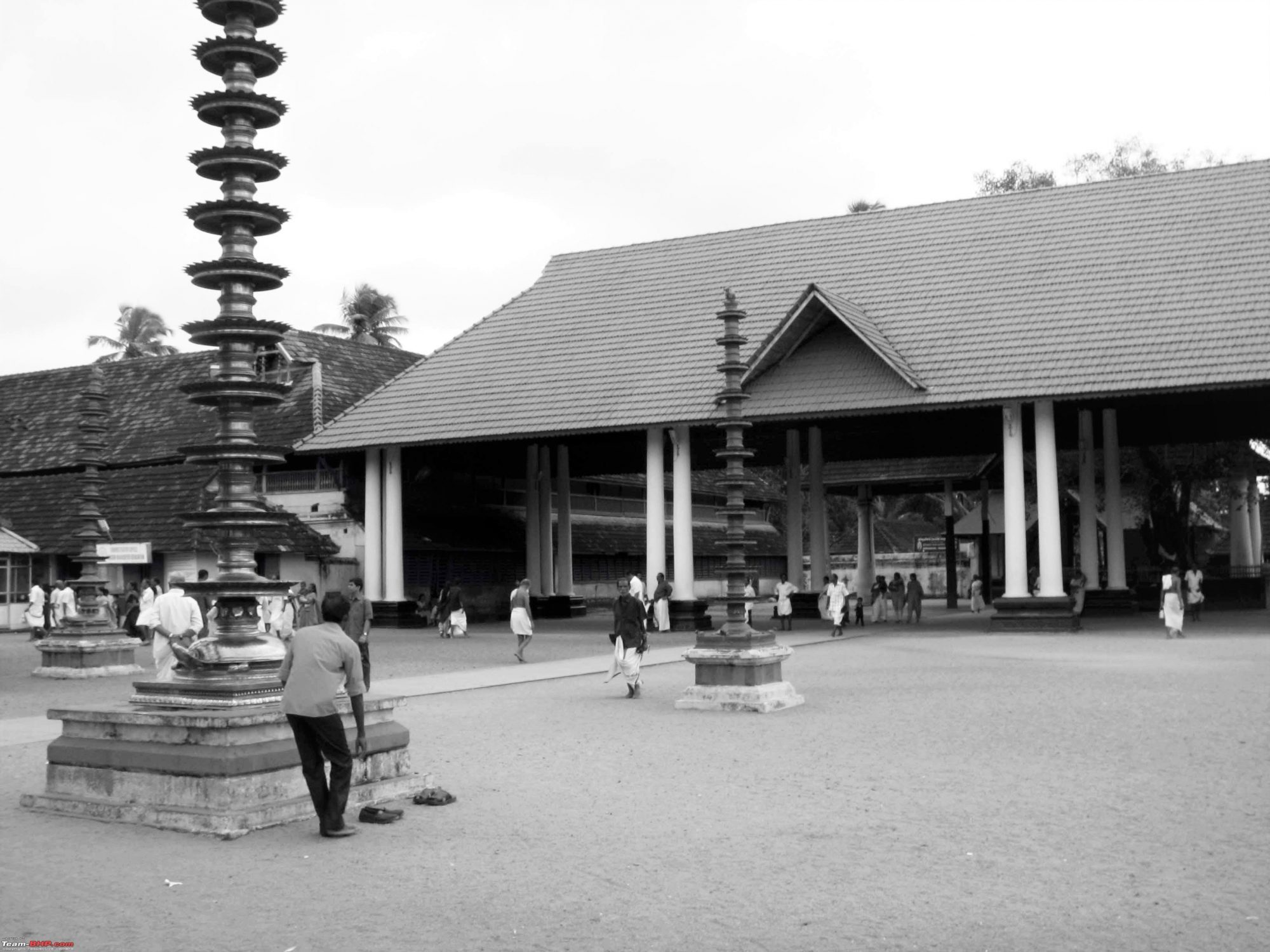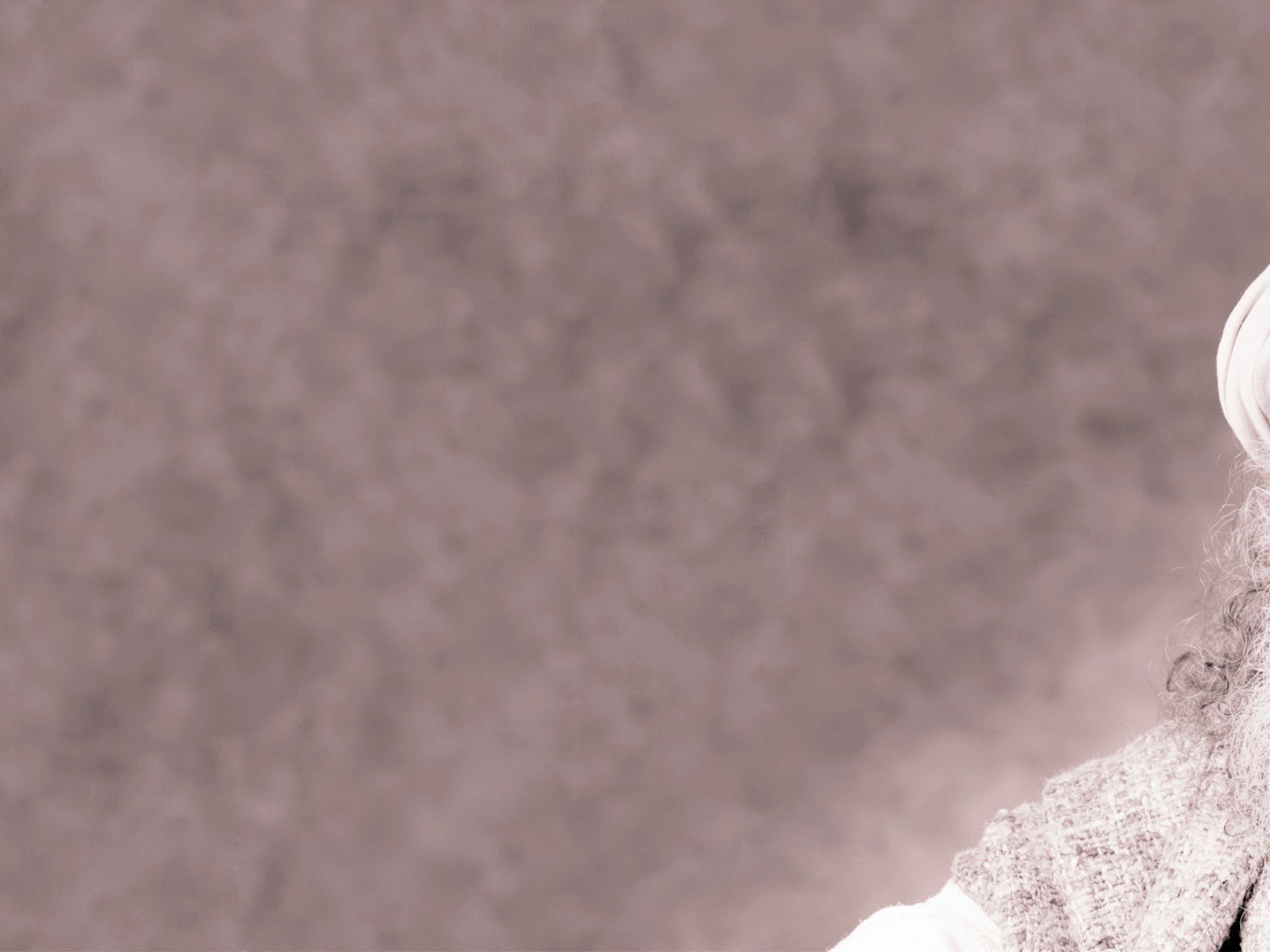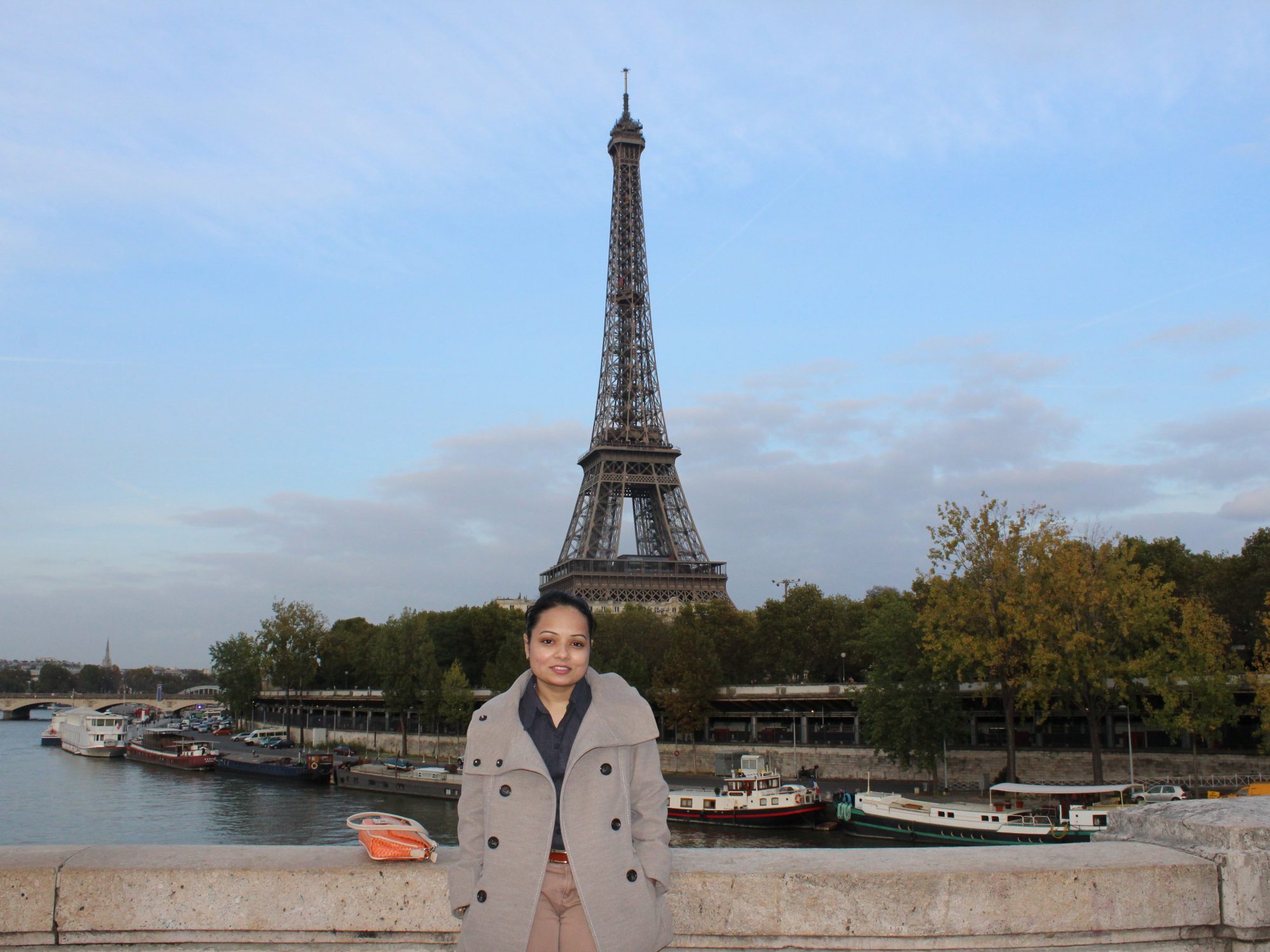|
||||
| Finally he reached a wooded area near the sea coast, caught a glimpse of the child disappearing into a huge ‘Ilappa’ tree. Immediately the tree fell into the ground and it assumed the form of Sree Maha Vishnu. The divine form had its head at ‘Thiruvallam’(a place about 3 miles from East Fort at where the Temple of Sree Padmanabha Swamy is located) and its feet at ‘Trippapur’
(5 miles away towards the north). Overawed by the majesty and the size of the divine form, which manifested before him, the Sanyasi prayed to the Lord to condense Himself in size so that he could behold Him. There upon the image of the Lord shrank to a size, three times the length of the Sanyasy’s Yoga Dand. His prayers had been granted. He immediately offered a raw mango, in a coconut shell(still this offering continues). The Lord ordained that, poojas to Him should be conducted by Tulu Brahmins. To this day half the number of poojaris(priests) in this Temple represent Tulu region. |
||||
| Another generally accepted version about the origin of the Temple relates it to the famous Namboothiri sanyasi Vilvamangalathu Swamiyar, whose name is linked with the histories of several temples in Southern India. This Swamiyar was also a Vishnu bhaktha. The legend is almost identical with that of Divakara Muni referred above. It is said that, when Sree Maha Vishnu presented himself in the Ananthasayana rupa (in the form of reclining on Anantha) before the sage at Ananthankaadu, the latter had nothing worthwhile to offer Him. From a mango tree standing nearby he plucked a few unripe mangoes and placed them in a coconut shell lying there and in all humility offered it as ‘nivedyam’ to the Lord. Even today salted mango forms a major offering. The original coconut shell has been encased in gold. It has also been the practice in the Temple for the past several centuries that the morning ‘pushpanjali’ is to be performed by a Namboothiri Brahmin sanyasi (designated Pushpanjaly Swamiyar) specially commissioned for this purpose. |

Shree Padmanabh swamy by Ms. Priyanka Singh
|
|
| Some historians and researchers hold the view that the Thiruvambadi shrine of Sree Krishna Swamy is older than the shrine of Sree Padmanabhaswamy. According to legend the Sree Narasimhaswamy and Sree Sastha shrines were established after the installation of the idol of Lord Sree Padmanabhaswamy. There is mention in the ‘Bhagavatha Purana’ (canto 10, chapter 79) that Sree Balarama visited “Syanandoorapuram” or “Ananthasayam” (Thiruvananthapuram) in the course of His pilgrimage. Similarly in the ‘Brahmanda Purana’ also there is a reference to “Syanandoorapura”. These references show that this Temple is of great antiquity and has been held in veneration over the centuries as an important seat of Sree Maha Vishnu. The compositions of Nammalvar, the great Vaishnavite saint, in praise of Sree Maha Vishnu of this city, prove beyond doubt that this Temple existed in the ninth century of this era. In the year 1050A.D. (225 ME), the Temple was reconstructed and the management re-organized by the then ruler.
By Ms. Priyanka Singh (Lord Padmanabha Swamy devotee) #Lord #Vishnu #Yogic #sleep |
